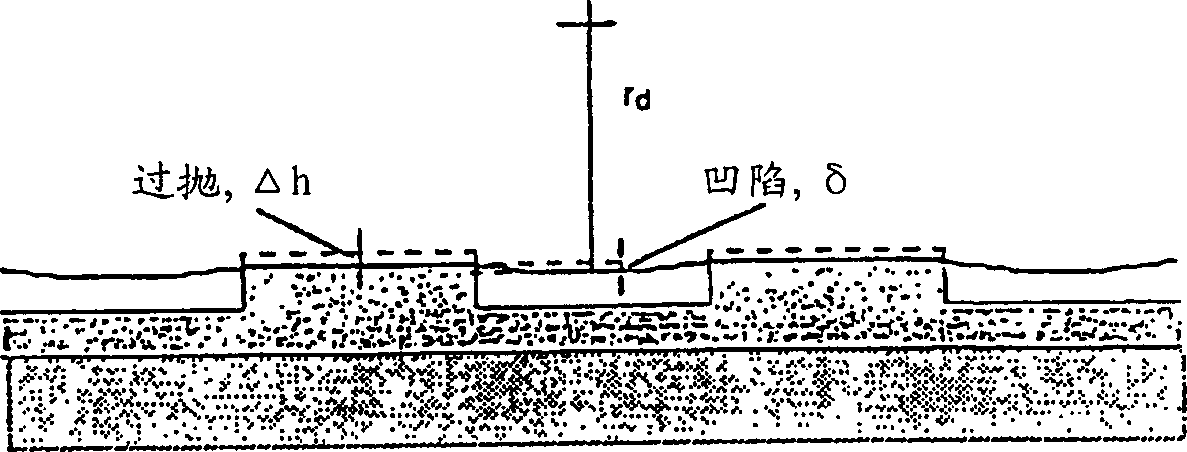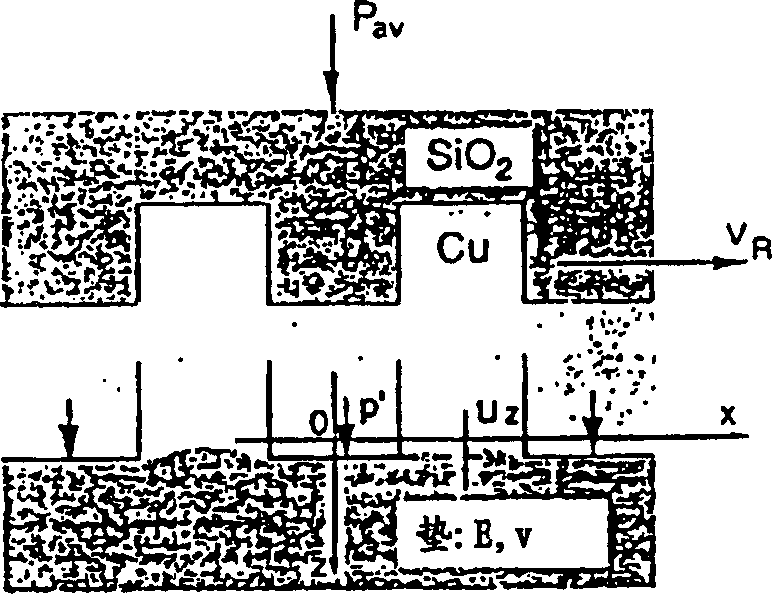Chemical mechanical polishing of copper-oxide damascene structures
A technology of chemical machinery and polishing slurry, which is applied in the direction of grinding/polishing equipment, grinding machine tools, and parts of grinding machine tools, etc. It can solve the basic principles of geometry and material properties, unclear friction mechanism, depression, etc. question
- Summary
- Abstract
- Description
- Claims
- Application Information
AI Technical Summary
Problems solved by technology
Method used
Image
Examples
Embodiment Construction
[0052] In all descriptions of the present invention, the following symbolic terms are used, and these terms are defined as follows:
[0053] A f = area fraction of metal pattern
[0054] a = half of the line width of the metal pattern (m)
[0055] C 1 、C 2 、C 3 = integral constant
[0056] E = Young's modulus of cladding material (N / m 2 )
[0057] f n , F = normal force and tangential force on the wafer (N)
[0058] H = Hardness of cladding material (N / m 2 )
[0059] H' = apparent hardness of composite surface (N / m 2 )
[0060] h = thickness of material removed from wafer surface (m)
[0061] k n = Preston constant (m 2 / N)
[0062] k w = wear coefficient
[0063] P = load per unit length on high parts (N / m)
[0064] p = normal pulling force on the wafer surface (N / m 2 )
[0065] p av = Nominal pressure on wafer (N / m 2 )
[0066] p'=average pressure on high parts (N / m 2 )
[0067] q = tangential pulling force on the wafer surface (N / m 2 )
[0068] r...
PUM
 Login to View More
Login to View More Abstract
Description
Claims
Application Information
 Login to View More
Login to View More - Generate Ideas
- Intellectual Property
- Life Sciences
- Materials
- Tech Scout
- Unparalleled Data Quality
- Higher Quality Content
- 60% Fewer Hallucinations
Browse by: Latest US Patents, China's latest patents, Technical Efficacy Thesaurus, Application Domain, Technology Topic, Popular Technical Reports.
© 2025 PatSnap. All rights reserved.Legal|Privacy policy|Modern Slavery Act Transparency Statement|Sitemap|About US| Contact US: help@patsnap.com



